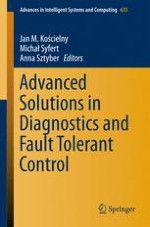2018 | OriginalPaper | Buchkapitel
Constraint Programming for Constructive Abduction. A Case Study in Diagnostic Model-Based Reasoning
verfasst von : Antoni Ligęza
Erschienen in: Advanced Solutions in Diagnostics and Fault Tolerant Control
Aktivieren Sie unsere intelligente Suche, um passende Fachinhalte oder Patente zu finden.
Wählen Sie Textabschnitte aus um mit Künstlicher Intelligenz passenden Patente zu finden. powered by
Markieren Sie Textabschnitte, um KI-gestützt weitere passende Inhalte zu finden. powered by
